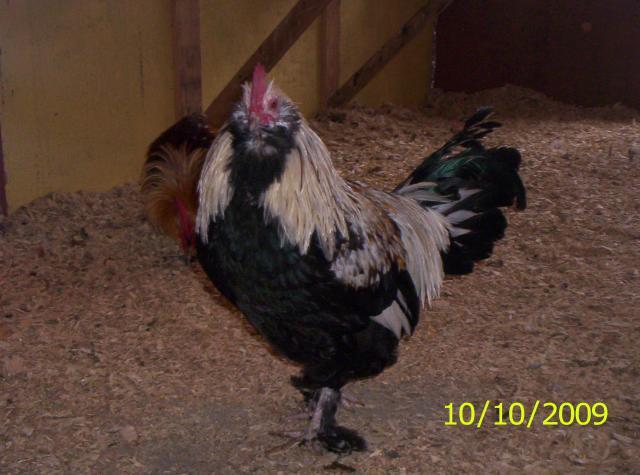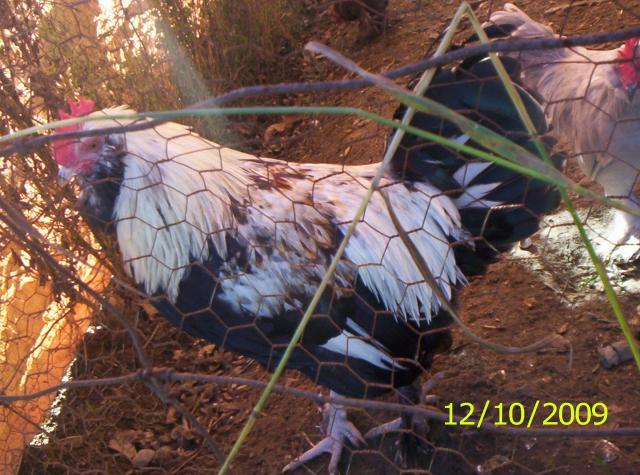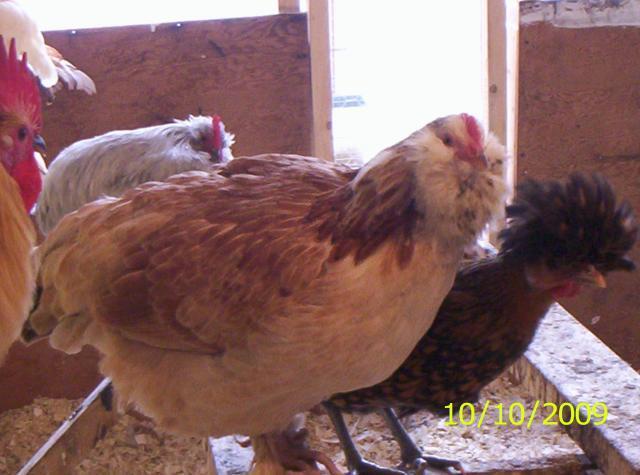I remember stumbling across this website several years ago and seeing something about Clear Faverolles.
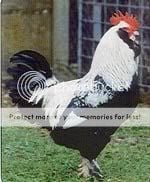
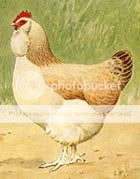
(Clear) Faverolles : salmon, cuckoo.
It comes from the village of Faverolles (Eure-et-Loir). The product of crossbreeding of farm hens with Brahma, Houdan, Dorking, Cochin and Langshan. At the beginning of the 20th century, it had no standard. The breeders' main concern was to produce a first class table fowl for the markets of the nearby capital.
Cock : 3.5 to 4 kg ; hen : 2.8 to 3.5 kg. Powerful body, wide, deep, not too long ; owlish head, well-developed beard lightly feathered tarsi, five toes ; the whole gives an impression of stately power, with no trace of heaviness. It is red and selected for its fine meat, early laying, as well as for the beauty of its distinctive plumage.
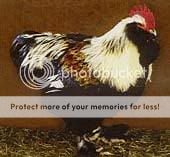
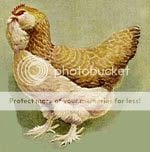
German Faverolles (Dark Faverolles) : dark salmon, white, black, ermine.
With its origins in Faverolles (Eure-et-Loir, France), the Dark Faverolles is a product of selection in Germany for darker colour as well as for a more oblong body. A voluminous bird with a wide and deep body, owlish head. It has a well- developed beard, lightly feathered feet, five well-separated toes, very familiar in character.
It also exist in bantam
Cock : 3.5 to 4 kg ; hen : 2.8 to 3.5 kg.
Perhaps that explains the off-type birds we see in the US? The "clear" roosters look like a basic Silver Duckwing pattern. You can see the original website here:
http://www.chez.com/volaillepoultry/franc2.html


(Clear) Faverolles : salmon, cuckoo.
It comes from the village of Faverolles (Eure-et-Loir). The product of crossbreeding of farm hens with Brahma, Houdan, Dorking, Cochin and Langshan. At the beginning of the 20th century, it had no standard. The breeders' main concern was to produce a first class table fowl for the markets of the nearby capital.
Cock : 3.5 to 4 kg ; hen : 2.8 to 3.5 kg. Powerful body, wide, deep, not too long ; owlish head, well-developed beard lightly feathered tarsi, five toes ; the whole gives an impression of stately power, with no trace of heaviness. It is red and selected for its fine meat, early laying, as well as for the beauty of its distinctive plumage.


German Faverolles (Dark Faverolles) : dark salmon, white, black, ermine.
With its origins in Faverolles (Eure-et-Loir, France), the Dark Faverolles is a product of selection in Germany for darker colour as well as for a more oblong body. A voluminous bird with a wide and deep body, owlish head. It has a well- developed beard, lightly feathered feet, five well-separated toes, very familiar in character.
It also exist in bantam
Cock : 3.5 to 4 kg ; hen : 2.8 to 3.5 kg.
Perhaps that explains the off-type birds we see in the US? The "clear" roosters look like a basic Silver Duckwing pattern. You can see the original website here:
http://www.chez.com/volaillepoultry/franc2.html

